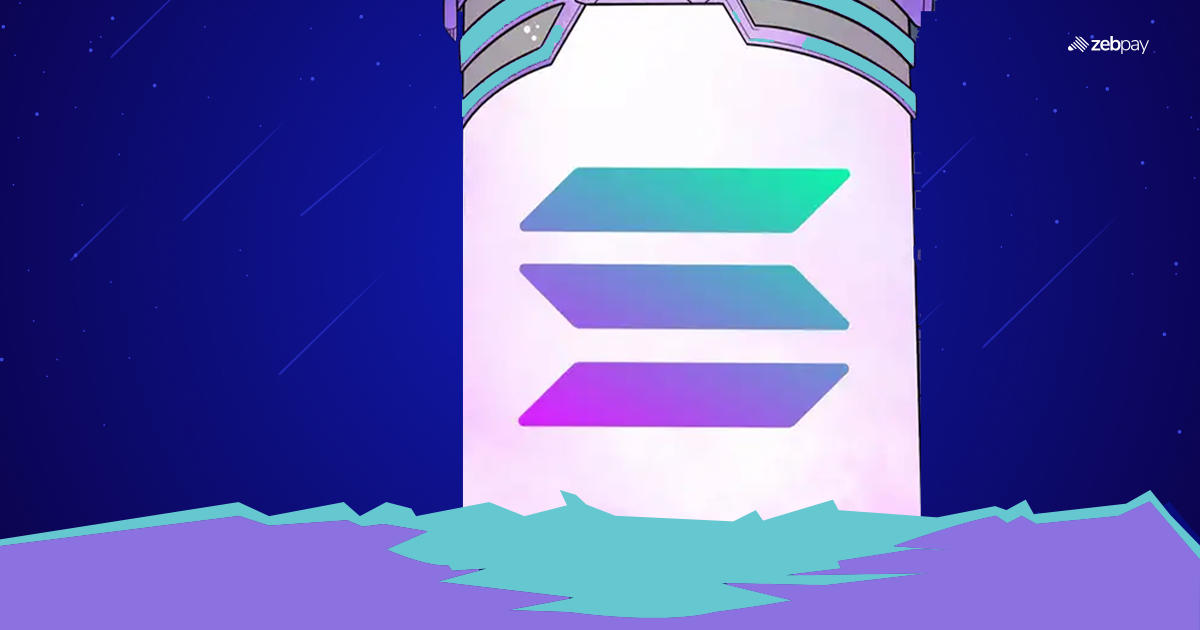Imagine walking into a store to buy the newest sneaker drop. You can pull out your phone, scan a QR code and buy it instantly. As you walk out of the shop, two tokens are added to your digital wallet. One is an NFT, exactly like the sneakers you just bought, usable in the game of your choice. The other is an NFT receipt, allowing entry into exclusive communities.
This is what Solana Pay envisions as the future of payment processing. It blends digital payments and web 3.0 to create a seamless experience every time you shop. To understand how this works, we must first understand what Solana is.
What is Solana?
Founded in 2017, Solana is a blockchain that makes transactions faster, simpler and more secure. It is also a platform for decentralised finance and smart contracts. In the last few years, the Solana blockchain has soared to become one of the most popular crypto platforms in the world.
Solana was created by Anatoly Yakovenko. He believed that while older blockchains were working towards efficiency, something was holding them back. Transactions on blockchains like Bitcoin and Ethereum do not factor in time. This introduces another point of verification. It also creates complications where transactions are not processed based on the time they occurred.
Yakovenko then came up with the unique consensus mechanism called Proof-of-History, which allowed for all transactions to match with a standardised clock. This timestamping made the blockchain over 10,000 times more efficient than old blockchains. As a result, Solana can process over 65,000 transactions each second. Fees to complete transactions are also minimal with Solana.
Solana Pay is the next step in bringing the blockchain’s capabilities to a larger audience.
How does Solana Pay work?
Solana Pay is a digital payment platform built on the Solana blockchain. It allows businesses and customers to engage in seamless transactions that are instant and without fees. The platform also does not affect the environment because of its low energy usage, unlike Bitcoin.
The network has an open software development kit, which enables new functionality and features over time. Developers can thus easily integrate their Solana DApps with Solana Pay and remove financial intermediaries. The platform also allows users to build on this base and propose changes by adding on their Github.
Read more: Solana is making its way into mobile phones
Solana Pay for Merchants
Merchants stand to benefit the most from Solana Pay. Unlike traditional payment methods, this platform does not charge fees on payments. There is no intermediary between the consumer and merchant, making it a peer-to-peer system.
Solana Pay is easy to implement with your current business. All you need to do is create a Solana wallet, either individually or through a crypto exchange. Next, this must be linked with your website to accept payments in crypto. Finally, payment links can be converted into QR codes and you’re ready to complete transactions with Solana Pay.
The platform brings you several other advantages. Any payments made to you immediately start earning you interest with DeFi. Solana Pay does not allow chargebacks, reducing the chance of fraud. Finally, it creates a new avenue of communication with your customers. This makes it easier to create personalised offers, loyalty programs and digital goods that accompany physical purchases.
Pros of Solana Pay
Solana is a newer blockchain that focuses on efficiency. Its unique implementation allows it to perform much faster than popular alternatives. For example, Bitcoin supports an average of 7 transactions per second, while Ethereum has seen a maximum of 108. Solana’s 65,000 transactions per second leave them far behind.
Solana Pay also removes intermediaries like banks or Visa and Mastercard from the transaction. The only ones involved in the transaction are the merchant and the customer. This makes the process simpler and cheaper, as there are no fees attached to the transaction.
The platform also provides detailed information about each transaction. These include the destination wallet, currency, transaction amount and purpose of the payment. These details are private and cannot be seen by anyone else on the network.
Cons of Solana Pay
While Solana may be more efficient, it is dwarfed in popularity by Bitcoin and Ethereum. Solana thus has a relatively lower user base who will be willing to adopt the new platform. This involves shifting their assets and wallets from the other chains to Solana, which may discourage some users.
Solana Pay is also a new platform, which may cause early adopters to suffer. Any bugs or vulnerability to hacks will leave merchants exposed. It may take time until merchants and developers are more comfortable with Solana Pay before the network can be considered foolproof.
The Verdict
Solana Pay isn’t just a way to pay with crypto. It allows merchants and customers to come together for an entirely new payment experience. With its fast network, it seems to be a better alternative than older blockchains. Added to this are the benefits that decentralisation provides. The reliability of the platform is a pressing concern. However, it can only be solved with time and higher adoption of Solana Pay.

